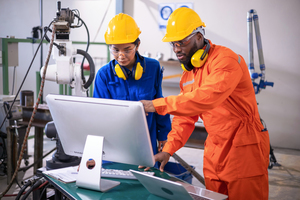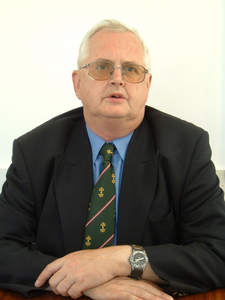

|
Edward Lowton
Editor |


|
| Home> | Plant, Process & Control | >Sensors and instrumentation | >Sensing the future of production and technology |
Sensing the future of production and technology
12 January 2023
While it's now common to see references to the Internet of Things (IoT), Industry 4.0 or Machine-to-Machine Communications (M2MC), these ideas will come to naught if sensor manufacturers don't grasp the nettle, says Tony Ingham

EXPERTS AND futurologists will tell you that Industry 4.0 is different from the IoT, and M2MC, but to those of us with a more down-to-earth understanding, they are effectively all the same - ways of significantly increasing the amount of data collected from production machinery and processing it in real time to produce better information, which in turn leads to increased productivity.
In fact, it is fairly obvious that the amount of data produced has been growing for many years and that this generally leads to better decision-making. The real-time management of large quantities of data is a well-developed discipline and has become known as ‘big data’.
Making data
Before we use data, we first have to produce it. This is where sensors come in and we can quickly realise that they are in essence, the building blocks of Industry 4.0, etc. There are many types of sensor already in existence, from simple on/off switches and counters to sophisticated sensors like Sensor Technology’s TorqSense, which continuously measures the torque generated by a rotating shaft.
It therefore seems inevitable that the technology of sensors is going to develop rapidly over the next several years. One obvious requirement is for intelligent sensors, with on-board (or at least local) data processing capabilities.
Instead of sending raw data off to the central control system for processing, these sensors do some or all of the processing in the field. They thereby produce refined information, which may be in a number of different formats, each suitable for a different type of user.
Sensor Technology pioneered this sort of distributed intelligence some years ago and has a long history of supplying intelligent sensors for many diverse applications. Currently, not all users want this capability, but those that do reap considerable practical benefits and are essentially setting up their own bespoke Intranet of Things.
Islands of control
A logical development of the intelligent sensor is the sensor LAN (local area network) or sensor cluster. Here, several sensors feed either raw data or processed information into a nearby controller for further processing. This produces a highly distributed control systems architecture with attributes such as robustness, speed, agility and flexibility for change and development.
It is notable that a sensor LAN will be free to include different types of sensors, so could measure many diverse variables. It could also monitor say the temperature in multiple separate locations and/or the torque in multiple drive shafts. Therefore, the level of information it could produce and forward to different users could be very highly developed.
Other trends we can expect to see in sensor development include cost reduction, miniaturisation and standardisation of communications’ protocols, plug-and-play, embedding capabilities and signal quality enhancements.
Sensors used to be something of a Cinderella topic for control systems engineers. However, they are now rising to such importance that they could change the whole concept of control engineering.
Tony Ingham is managing director of Sensor Technology
For more information:
Tel: 01869 238400



















